Drip Irrigation Tips: How Long Should You Water Container Plants?

As a homeowner, you're probably always looking for ways to conserve water. Even if you only have a small garden, using drip irrigation can make a big difference. But how long do you need to water your plants for with drip irrigation? Keep reading for some tips on how to get the most out of your watering schedule.
If you've made the transition to a drip watering system for your flowerpots and boxes, you may already be enjoying a huge relief from watering by hand. The secret to getting great results from your drip system, whether you are turning it on and off manually or with a digital timer, is to set watering schedules correctly for the containers and plants as well as variations in the weather. Here are some tips for avoiding common mistakes and watering no more or less than needed.
Common Drip Watering Setup
| Planting | Recommended Drip Irrigation Device | |
 Large Containers (16+ inches diameter) |
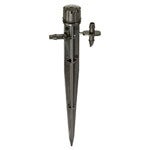 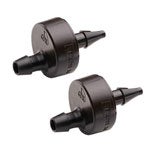 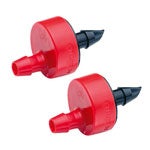
|
Bubblers w/ adjustable 0-13 Gallons Per Hour (GPH) flow Options Two 1 GPH Drippers One or Two 2 GPH Drippers |
 Medium Containers (8 to 16 inch diameter) |
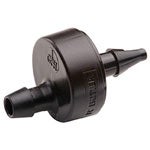 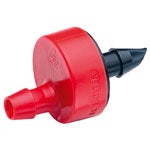
|
Single 1 GPH or or 2 GPH Dripper |
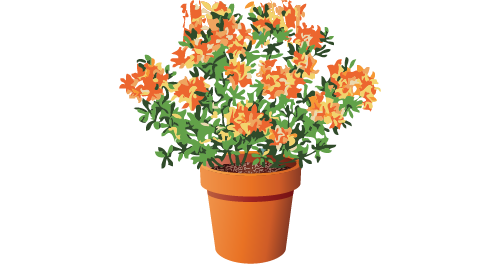 Small Containers (less than 8 inch diameter) |

|
Single 0.5 GPH or 1 GPH Dripper |
 Window Boxes |
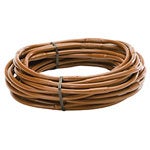
|
1/4 inch Emitter Tubing w/ 0.8 GPH Drippers every 6 inches |
If you don't happen to have an exact balance of flow rates in your array of planters, it isn't an absolute obstacle for water scheduling. Just be aware that having some uniformity in the moisture plan for each container size will allow you to run things on a single schedule, with everything watered for the same length of time and frequency. Otherwise, you may have to keep an eye on plants that appear dry and give them some occasional touchup watering by hand. Considering that extra work, it may be easier to change out a few of the devices to make a single watering plan possible.
Scheduling Tips
Whether you are setting an automatic watering timer or simply wish to establish a routine for turning the system on and off manually, the process is basically the same.
Start with a test run to determine how the soil is being penetrated with the watering devices you have. Turn on the water for 15 minutes. Then after shutting it off, wait another 30 minutes and use a garden spatula (or your hands) to dig down below the drippers. Is the soil moist at the depth of your plants' roots? And even better, does it moisten the soil all the way down to the bottom of the container? That is how deep many plants will be rooted when fully established. If the soil isn't moist, try adjusting the time up to 20 to 30 minutes for your starting plan. You also might find it necessary to move the drippers closer to the plants.
Don't Overwater
Avoid the most common mistake: overwatering your plants. This is a particular tendency with containers that do not drain properly. When containers are waterlogged, the stagnant moisture can cause the roots to rot. Remember, drip watering isn't intended to puddle the soil like you may be accustomed to seeing when watering with a hose or watering can. The dripping action is very subtle, often displaying as just a small, wetted area of the soil. You want the water to travel down through the potting mix to the root zone through capillary action, and not drown the plants.
During the seedling stage, plants will need extra watering time, possibly along with supplemental hand watering until they have adapted. But after that point, you can begin to work toward a more regular drip schedule. We recommend that you start that maintenance schedule with a little less water than you think the containers need. Watch the plants' health and make adjustments if you detect those plants are beginning to look dry and wilted. You may be surprised how a drip system's targeted watering of the roots will make it possible for annuals to thrive with very little water once established.
Another suggestion from gardening experts: Lose those saucers that go under pots. Though they may help keep the deck clean, their standing water can leach back up into the container, once again contributing to rot.
Increase During Hot/Dry Weeks
While you keep an eye on potential overwatering, hot summer days pose the opposite concern. Flowerpots and containers dry out quickly when it's hot, much faster than ground landscaping and gardens. Check terra cotta pots particularly as they naturally tend to weep water and oxygen. That aeration is generally beneficial but requires more frequent attention to watering. During periods of 85°+ temperatures, change your watering plan to more days per week, even every day if necessary. In general, if the top 1"-2" of the soil is dry, it's a good idea to bump up the watering. A soil moisture gauge may help you monitor as the season progresses.
In desert climates such as some areas in Arizona and New Mexico, you might also need to water with 2-3 times per day. Use your judgement and, again, your observation of plant condition. When watered properly, many plants actually do quite well in hottest weather.
Decrease In Cool/Wet Weeks
In contrast to the above, reduce watering volume and cycles per week when the weather isn't drying out your plants. Particularly if your pots are exposed to rain, keep an eye on them to be sure the skies aren't flooding your plants. If the pots aren't draining well, that is another reason to back off on your drip schedule.
Water In the Early Morning and Early Evening
Same as for timing of a lawn irrigation system, you can give your container plants more time to absorb the water by scheduling it before the day gets too hot and the water evaporates too quickly from the soil. Of course, if your community imposes water window restrictions, adjust your scheduling to be as close to this timing as permitted.
Customize for New Plants, Certain Plant Species
Keeping newly planted annuals moist is important to establishing a healthy root system and acclimating them to a planter and new soil. As they grow, they become more tolerant, allowing you to reduce watering somewhat. Flowering annuals tend to prefer soil that is consistently moist while draining properly, not soggy. Use a quality potting soil to help provide for good drainage and deep root growth. Also top off the pots with mulch to help lock in the moisture, allowing that drainage action to take place.
Larger plants and, as a general rule, plants with big leaves also seem to drink a lot as they obviously have more tubular structure and surface area. Coleus plants are an example, requiring soil that is always a bit moist. Daily watering during hot, dry months is often necessary. If you are raising garden plants in containers, those plants also need more water as the vegetables develop.
Fortunately, with drip watering, it is quite easy to fine-tune flow rates by changing or adding devices. Trim the ¼" tubing with scissors and insert a new dripper or a bubbler to increase or decrease water. You can also try branching the tubing with additional devices by adding a tee in the tubing and staking that extended section on opposing sides of the plant. For example, you might position 2 or 3 drippers around the plant to distribute the water properly for even root growth.
Watering Guide
Following are 3 optional schedules involving a mix of container sizes. Note the different suggested watering durations (minutes) in the right three columns for Cool, Warm/Humid and Hot/Dry climates.
These are recommended starting schedules. Increase or decrease watering volume and days per week as plant conditions and weather dictate. Look for signs of stress such as dropped flower petals, dry or discolored leaves as well as dry soil in the containers and gradually adjust the schedule until plant health improves.
A drip irrigation system can take the guesswork out of watering your container plants. With the proper set up and maintenance, a drip system can water your plants just the right amount and save you time and hassle. Using these tips, you can avoid common mistakes and water no more or less than needed. Shop our online store for all of the components you need to get started with drip irrigation today!

